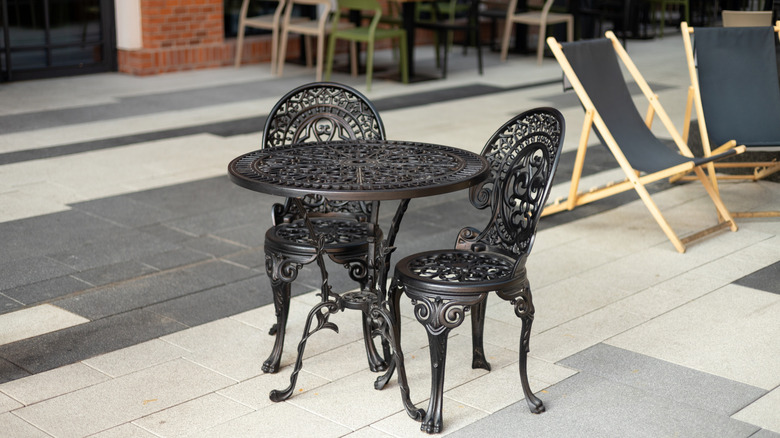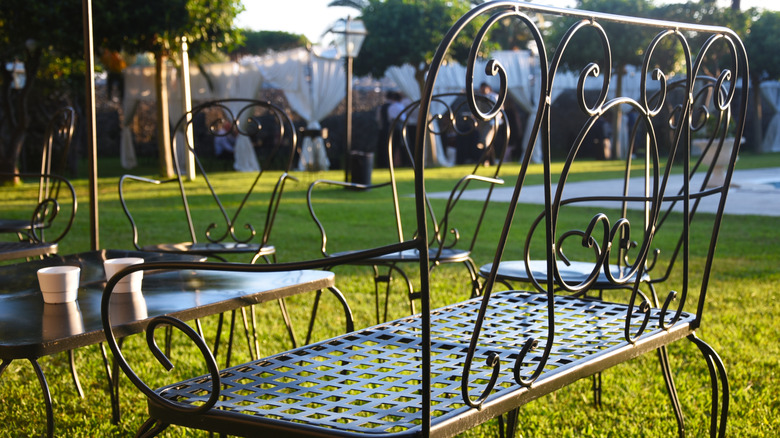The Differences Between Wrought Iron & Cast Iron Furniture (And Which Should You Get?)
Many people think wrought iron and cast iron are just two expressions for the same thing, and that's perfectly understandable. Furniture made from these two materials is usually associated with great strength and tremendous durability. We expect solidity and weight, even when the design looks relatively delicate. You might typically picture traditional patio furniture with twists and scrollwork, often in shades of black or gray. In fact, there are differences between wrought iron and cast iron both in terms of their chemical composition and, more importantly, how the furniture from each material is made. This could have an impact on which one you choose, so it's worth a closer look.
Chemically, wrought iron has lower carbon content than cast iron and is less prone to rust (although it still does). Wrought iron is worked with tools. It is heated in a furnace or forge until it begins to soften, then beaten, pulled, and twisted. It can be reheated and reshaped until the craftsperson is satisfied with the result. The material is strong yet flexible, allowing it to stand up to bending and impact. Wrought iron furniture can often be highly individual, and although sometimes perceived as old-fashioned, there are numerous ways to decorate with wrought iron in a modern way.
By contrast, cast iron is heated until fully liquid, then poured into a mold and left to cool. Thus, several pieces of cast iron furniture can be identical. From a manufacturing point of view, the advantage is repeatability, and because of that, cast iron furniture can often be more affordable. Cast iron is often more brittle than wrought iron, potentially allowing it to crack with impact.
Choosing iron furniture and what to look for
When it comes to cast iron versus wrought iron, it's not really a case of one type being better than the other as both offer a durable furniture option. Your decision to choose wrought iron or cast iron furniture will probably be guided by the aesthetic and, thus, its suitability for a given position. Although it's by no means always the case, wrought iron furniture can be made to look more delicate than cast iron while still retaining great strength. Cast iron is generally heavier, which some feel is one of the benefits of choosing cast iron patio furniture because of the stability, but it can be an issue for rearranging your furniture. Both may show signs of corrosion eventually, but fortunately, when that does happen, you can make rusty furniture new again with some simple hacks.
Care is needed when shopping for wrought iron or cast iron furniture if you are looking for authenticity. It's not unusual for manufacturers to call something wrought iron when it's actually steel. It may look similar, is almost certainly lighter, and may be less expensive, but it's an imitation. The same is true for cast iron, which has become a descriptive phrase used for a variety of products, including cast aluminum. These materials have their benefits but are not the genuine article. It can be difficult to tell, particularly if you're buying wrought iron or cast iron furniture online. Check the description and weight carefully. Both true irons are heavy. If you're at the store, try picking a piece up. If you can do so easily with one hand, chances are it's neither wrought or cast iron.

